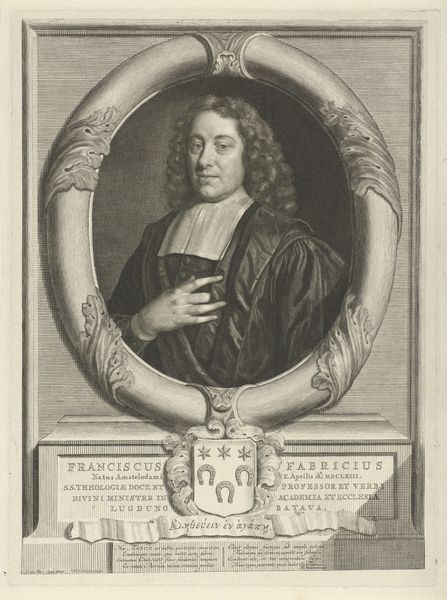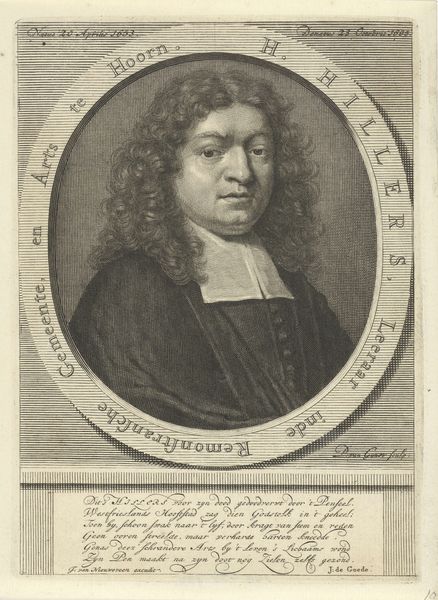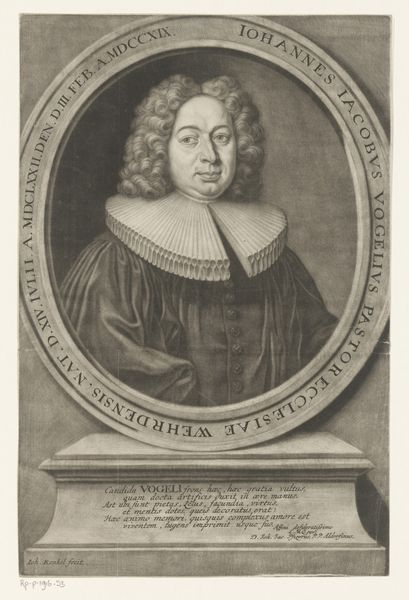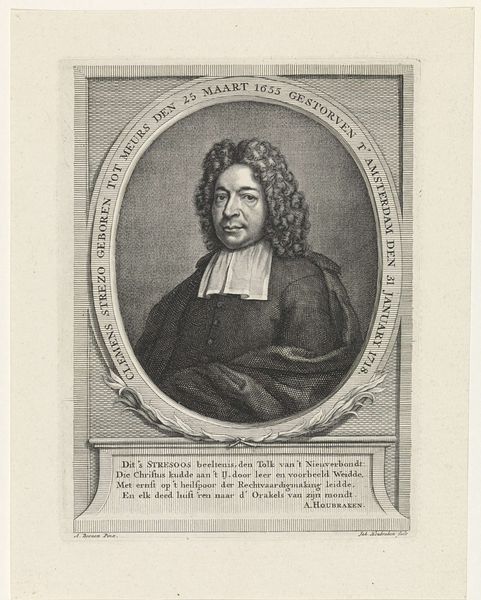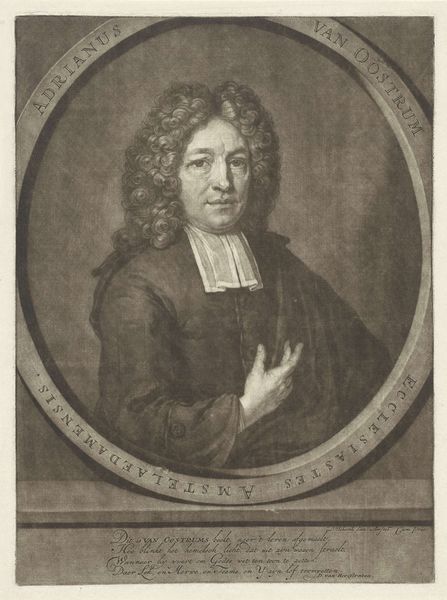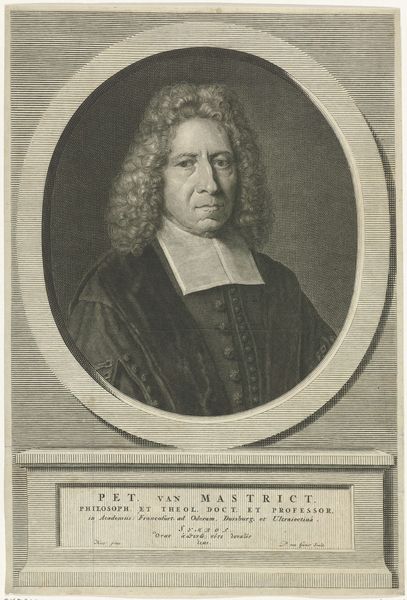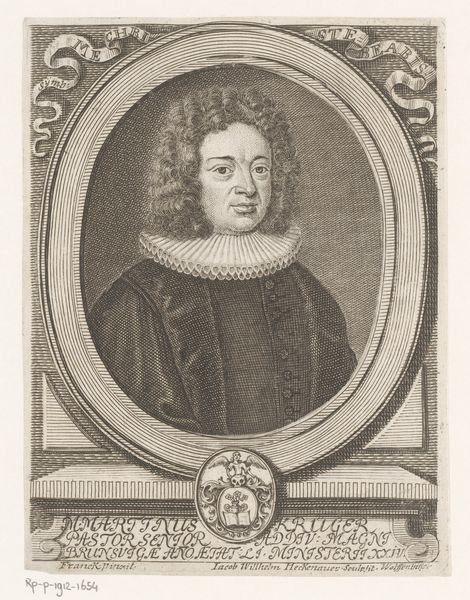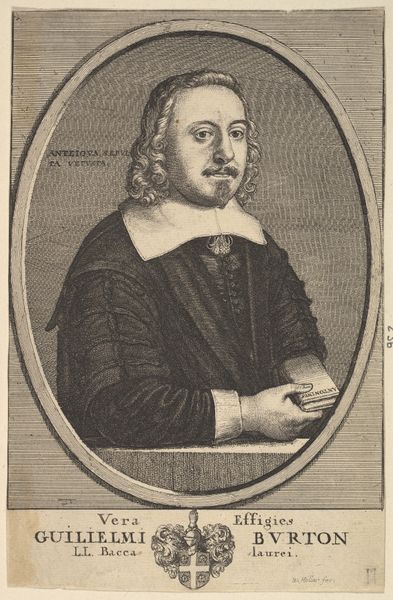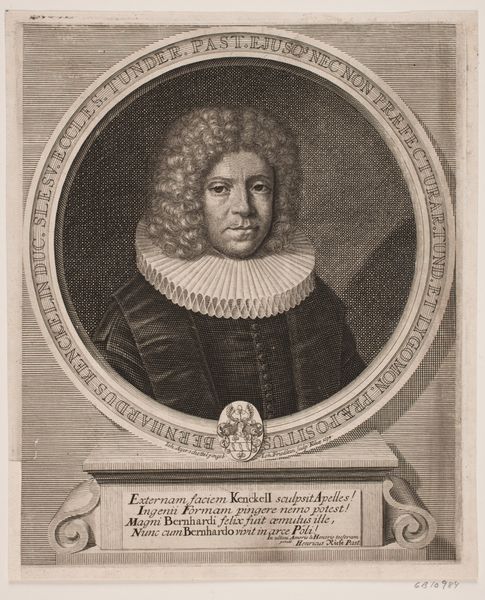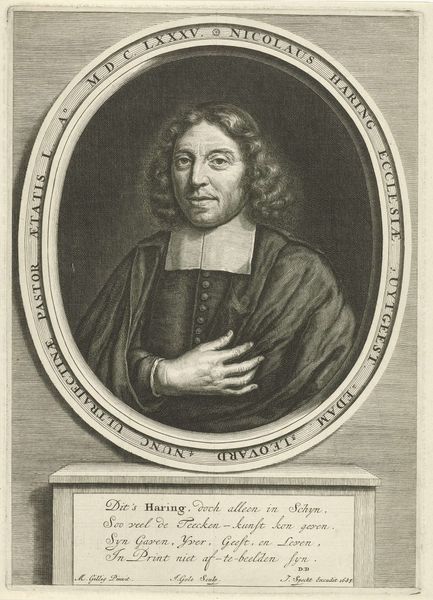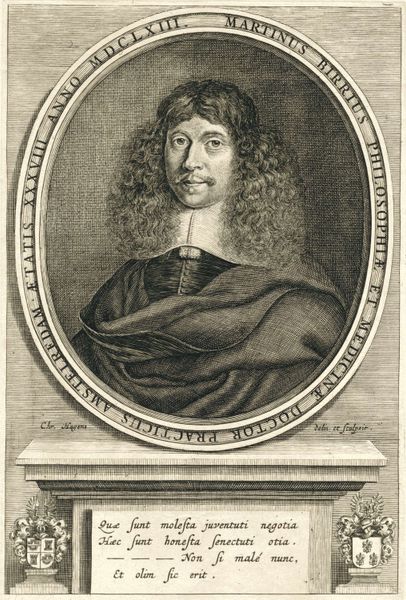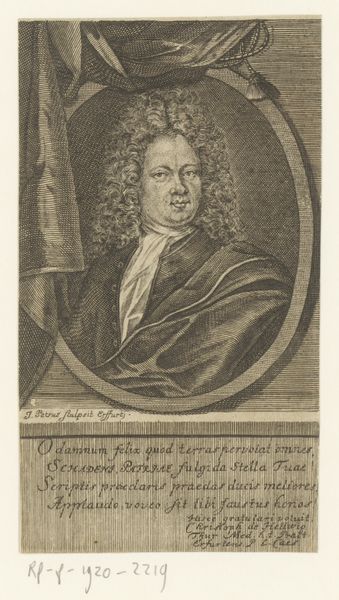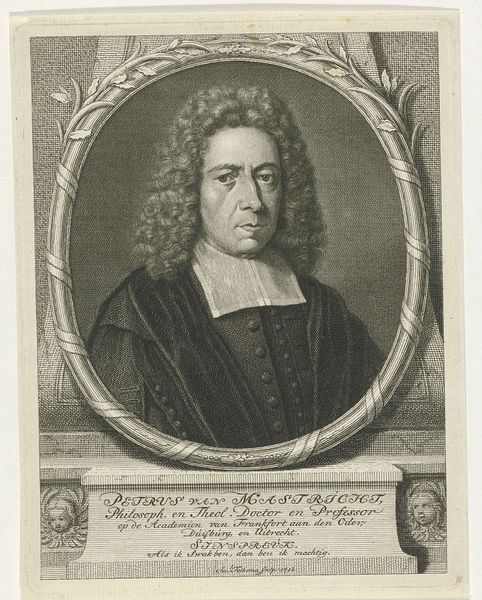
print, engraving
#
portrait
#
baroque
#
dutch-golden-age
# print
#
old engraving style
#
historical photography
#
history-painting
#
engraving
Dimensions: width 152 mm, height 208 mm
Copyright: Rijks Museum: Open Domain
Editor: This is a portrait of Willem van Brakel, an engraving by Pieter van Gunst, dating from between 1659 and 1731. There's a stillness and formality that immediately strike me. What layers do you see in this piece? Curator: The formality you observe is significant. Think about the social and religious context of 17th and 18th-century Dutch society. Willem van Brakel was a prominent theologian. How might the portrait reinforce societal hierarchies and the subject's own self-representation within those power structures? The deliberate, controlled pose, the sober attire – they all communicate a certain status and authority, reflecting the values of his Calvinist community. Consider also the rise of portraiture during the Dutch Golden Age. Editor: It's like a visual declaration of his role, then. The framing reinforces that sense of importance, right? The way he's presented in that oval. Curator: Exactly. The framing and the detail invested in rendering his likeness elevates him. Now, what about accessibility? How does the medium of print—specifically engraving—contribute to wider dissemination of his image and, potentially, his ideas? Editor: So, the print makes him more widely known… It’s like early social media for religious figures. I hadn’t considered that. I tend to only look at what is within the frame. Curator: Always consider what's outside the frame! And for whom was this image intended? What role did images play in the religious and intellectual debates of the time? How might such a portrait function within the context of religious authority and influence? These questions can open up new avenues for understanding its enduring resonance. Editor: It’s fascinating to consider this as part of a bigger cultural and even political landscape, rather than just a picture of a man. I’ll never look at portraits the same way! Curator: Indeed, every artwork is deeply intertwined with its social fabric, and viewing it intersectionally reveals rich layers of meaning and implication.
Comments
No comments
Be the first to comment and join the conversation on the ultimate creative platform.
